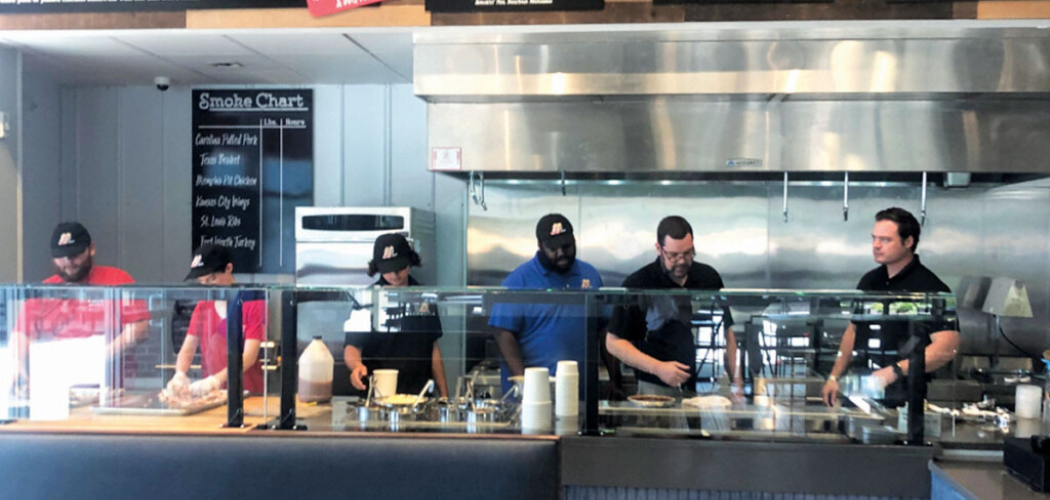Executive Interview with Savneet Singh dives into the details of this groundbreaking report.
PAR Punchh® released its first annual "PAR Punchh Loyalty Trends Report" on August 2nd, providing insights into the latest innovative ways top restaurants are using loyalty programs to meet market challenges and elevate customer engagement.
PAR Punchh delivers customer loyalty and engagement solutions to over 78,000 restaurants monthly (over 30% of top 100 restaurant brands). The company is a key operating unit of PAR Technology, a leading global foodservice technology company and provider of unified commerce for enterprise restaurant brands.
We connected with Savneet Singh, CEO & President, PAR Technology Corp.(NYSE:PAR), to summarize highlights of the report and to answer key questions from The Wise Marketer. We appreciate Mr. Singh’s time and proudly share this transcript of our interview.
Wise Marketer (WM): You just released the Loyalty Trends Report 2024. Can you tell us about the scope of the report, who participated and how it is targeted?
Savneet Singh, PAR Technology Corp (PAR): The 2024 Loyalty Trends Report is PAR Punchh’s bold debut in the loyalty insights arena. As a powerhouse in restaurant loyalty, working with 30 of the top 100 brands and powering 78,000 locations monthly, we’ve tapped into millions of customer interactions to uncover the trends that matter most.
This report isn’t just data—it’s a deep dive into the patterns shaping the future of loyalty, crafted by our expert data team and loyalty strategists. It’s designed to arm brands with strategic insights and uncover the opportunities that lie ahead in an ever-evolving market.
WM: There are 5 key insights that headline the research. Strong Loyalty Sales Growth and Gen Z driving loyalty signups were two that jumped out to us. Can you give us more background on what you discovered?
PAR: Absolutely. Our research uncovered some fascinating dynamics in the loyalty landscape. First, the strong loyalty sales growth highlights how brands that invest in robust loyalty programs are reaping significant financial rewards. These programs aren’t just a nice-to-have—they’re becoming a critical revenue driver.
We’re seeing brands that embrace loyalty strategies outperform their competitors with increased average check sizes and more frequent visits. Customers who feel valued and rewarded are spending more and coming back often.
As for Gen Z, they’re the rising stars of loyalty. They accounted for nearly 25% of total signups, marking the largest year-over-year increase of any generation. This tech-savvy group expects seamless, personalized digital experiences and is quick to engage with brands that meet those expectations.
They’re not just signing up—they’re actively participating, driving significant value for brands through higher transaction volumes and repeat engagement. Our findings make it clear: catering to Gen Z isn’t just about keeping up with trends; it’s about securing the future of your brand.
WM: There are loyalty programs everywhere. Did the research confirm that loyalty programs can still be a differentiating factor for restaurant operators?
PAR: Without a doubt. While loyalty programs might seem ubiquitous, our research shows they remain a powerful differentiator for those who know how to leverage them. In 2023, average sales growth across the board was solid—4.7% for casual dining, 11.2% for fast casual, and 7.9% for quick service, according to a 2024 Technomic report. But here’s where it gets interesting: loyalty programs blew those numbers out of the water, driving sales growth of 20% for casual dining, 18% for fast casual, and 10% for quick service chains.
The key to this success? Top-performing loyalty programs are masters of customization and personalization. They don’t just throw out generic offers; they deliver highly targeted, relevant promotions that speak directly to their customers in their unique brand voice. They’re also smart about using their programs to create ongoing customer journeys—from the first visit to the twentieth—by running engaging challenges, offering membership tiers that unlock VIP status, and rolling out subscription models that keep customers coming back for more. These strategies set the top players apart in a crowded market and drive real, measurable results.
WM: What trends in dining behavior did you notice and what should operators know to improve profitability?
PAR: One of the most striking trends we observed is the power of omnichannel ordering. Restaurants that have successfully transitioned more of their customer base to an omnichannel model are seeing a significant payoff. These guests visit more often and spend more per visit than those sticking to a single channel. This is a game-changer for profitable growth.
The reason is simple: omnichannel ordering offers unmatched convenience and a frictionless experience. When customers can effortlessly switch between ordering online for pickup, opting for delivery via a third-party app, or dining in, it breaks down barriers. It encourages more frequent engagement with the brand. This flexibility meets customers where they are, catering to their needs in real-time, and the results are clear—higher frequency, higher volume, and, ultimately, higher profitability.
WM: How does DayPart impact visit frequency? Is there a correlation to customer loyalty?”
PAR: Absolutely, daypart plays a pivotal role in shaping customer habits and, by extension, loyalty. Customers are creatures of habit, and our analysis of daypart data across various restaurant types confirms this. In casual dining, customers flock to their favorite spots when they have the most leisure time—Fridays, Saturdays, and Sundays. These three days alone account for a staggering 56% of weekly sales in this segment, underscoring how critical weekend engagement is for building loyalty.
For the QSR segment, the evening rush reigns supreme. These customers are drawn by the promise of speed, consistency, and familiarity, making dinner time easy and driving 56% of sales during weekday and weekend evenings. It’s a testament to the power of reliability in fostering repeat business.
Interestingly, fast-casual is the outlier here, enjoying nearly equal customer visits in the afternoon and evening, with 45% and 50% of sales, respectively. This balance highlights the versatility of the fast-casual experience, appealing to customers at different times of the day and solidifying their loyalty through consistent satisfaction. In each case, understanding and leveraging daypart behavior is key to driving visit frequency and deepening customer loyalty.
Editor’s Note:

Savneet Singh is CEO & President, PAR Technology Corp. (NYSE:PAR), one of the largest restaurant technology companies in the world. After taking the helm at PAR, Savneet restructured and recapitalized the business from near bankruptcy to a market cap of over $1 billion.
Mr. Singh is also a partner of CoVenture, LLC, a $2.5b multi-asset manager with funds in venture capital, direct lending, and cryptocurrency. Mr. Singh has served on the Boards of a number of public and private companies, including CDON (NASDAQ OMX: CDON), TCGPlayer, and PAR Technology (NYSE: PAR).


